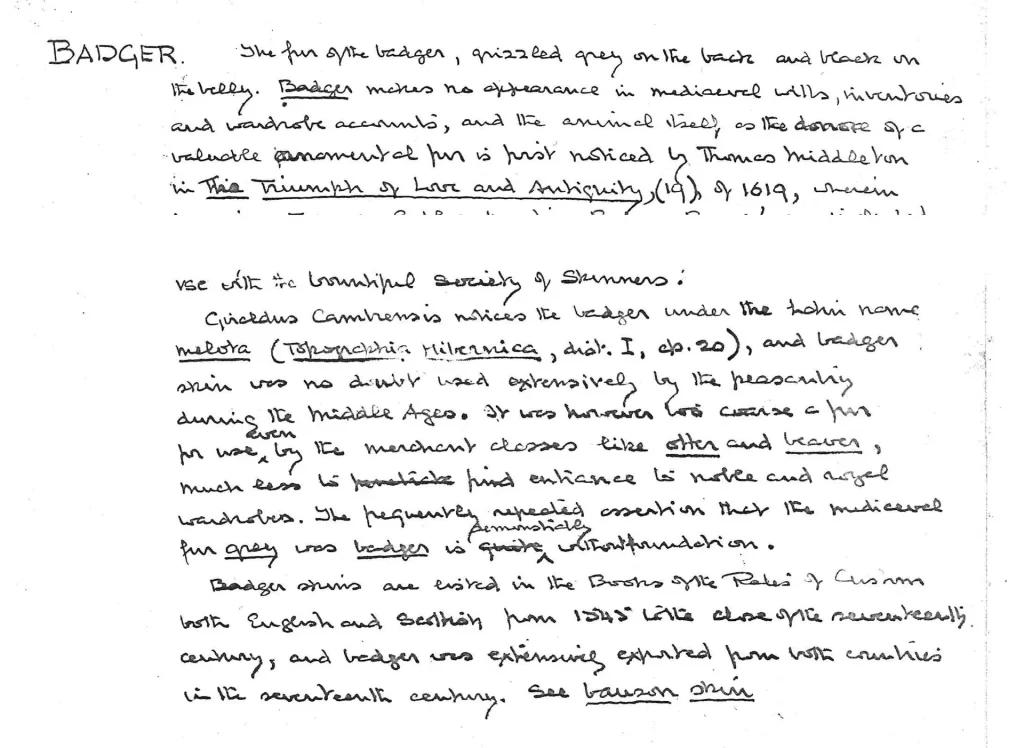
BADGER. The fur of the badger, grizzled grey on the back and black on the belly. Badger makes no appearance in mediaeval wills, inventories and wardrobe accounts, and the animal itself, or the donor of a valuable garment of fur is first noticed by Thomas Middleton in The Triumphs of Love and Antiquity (19), of 1619, wherein use with the bountiful Society of Skinners: Giraldus Cambrensis notices the badger under the Latin name melota (Topographia Hibernica, dist. I, cap. 20), and badger skin was no doubt used extensively by the peasantry during the Middle Ages. It was however too coarse a fur for use by the merchant classes like otter and beaver, much less is panthera, find entrance to noble and angel wardrobes. The frequently repeated assertion that the mediaeval fur grey was badger is quite without foundation. Badger skins are listed in the Boston style Rolls of Custom both English and Scottish from 1543 till the close of the seventeenth century, and badger was evidently exported from both countries in the seventeenth century. See Lawson Skin.